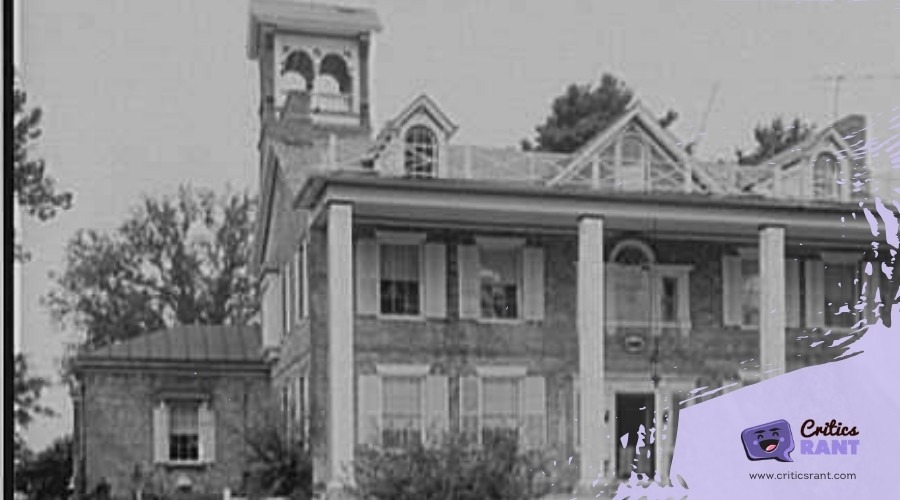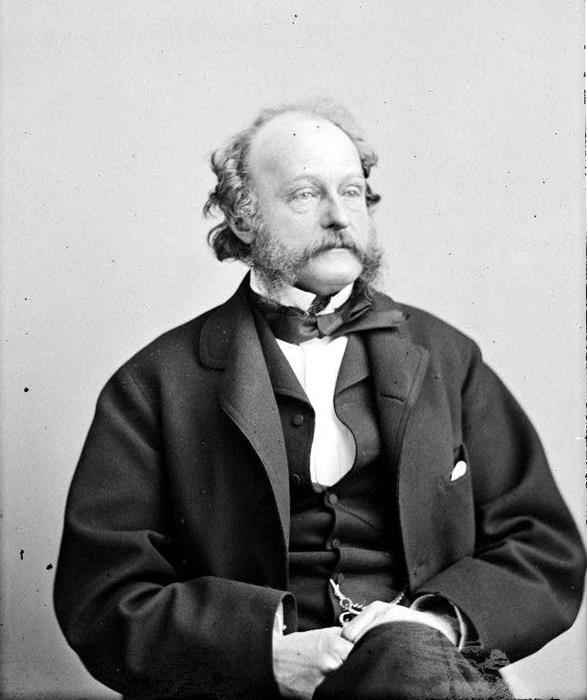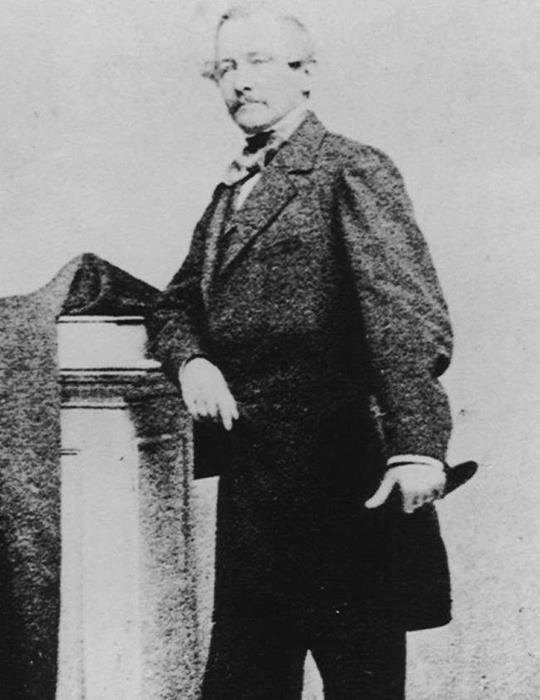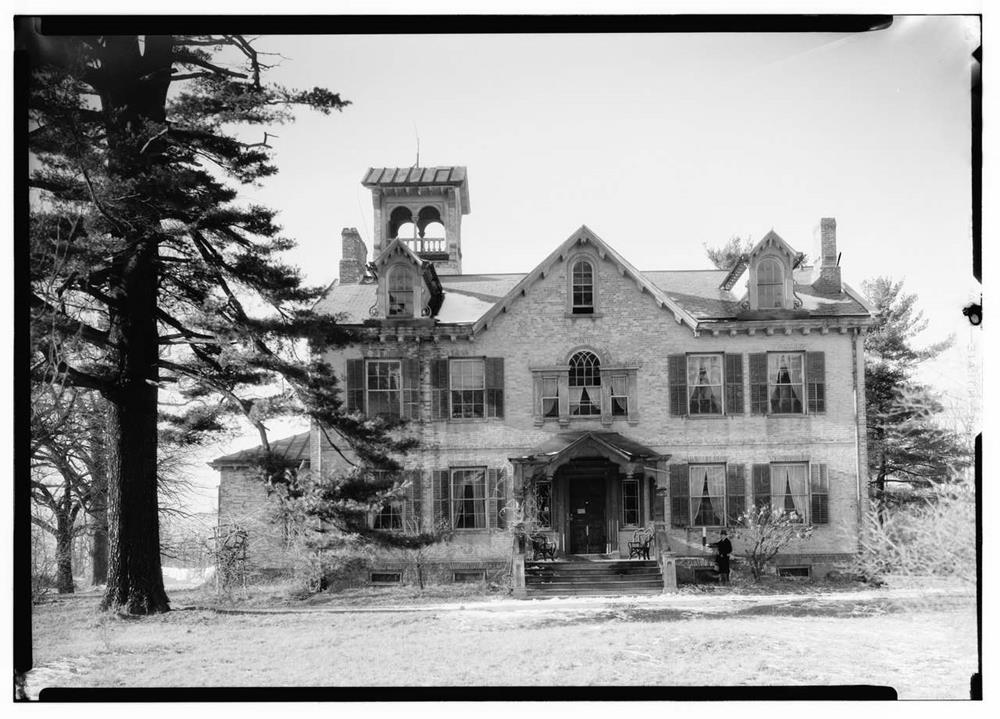Martin Van Buren was the eighth President of the United States, but there’s much more to his story than just his time in office. Born in Kinderhook, New York, he came from a Dutch family and grew up speaking Dutch as his first language. This article will look closely at his family background, exploring his parents, his own family with his wife Hannah, and the lives of their children and descendants. We will see how his family roots influenced his life and presidency and how his descendants continued to shape their own paths.
Early Life and Family Background
Martin Van Buren, born on December 5, 1782, in Kinderhook, New York, grew up in a small village that was largely populated by Dutch families. As the third of five children, Martin was the first of his family to be born in the United States, following the independence of the country. His early life in Kinderhook shaped much of his character and political views later on.
Family Roots
Van Buren’s parents, Abraham Van Buren and Maria Hoes Van Alen were both of Dutch descent, and the influence of this heritage was strong throughout his life. His father was a farmer and a tavern owner, which allowed young Martin to interact with a variety of people, including influential political figures who frequented Abraham’s establishment. This environment was crucial in developing his social and political skills.
Immediate Family
- Father: Abraham Van Buren was a third-generation descendant of Cornelis Maessen van Buren, who had migrated to the United States from the Netherlands in 1631. Abraham’s involvement in local politics and his work as a tavern owner introduced Martin to the world of politics early on.
- Mother: Maria Hoes Van Alen, also of Dutch descent, was actually Martin’s stepmother. His biological mother, also named Maria, died in 1777. Maria Hoes brought stability to the household and helped raise Martin and his siblings.
- Siblings: Martin had four siblings, though not much is widely recorded about them. They lived a modest life in Kinderhook, surrounded by their extended family and the tight-knit Dutch community.
Martin Van Buren’s upbringing in a bilingual household (speaking both Dutch and English) and the early exposure to political and social discussions at his father’s tavern were significant. These experiences not only helped him understand diverse viewpoints but also helped him craft his political ideologies, which would later influence his policies as president.
Marriage and Children
Martin Van Buren married Hannah Hoes, his childhood sweetheart and distant cousin, in February 1807. Like Martin, Hannah was of Dutch descent and spoke Dutch as her first language. Their shared background and deep roots in the Kinderhook community provided a strong foundation for their marriage. Tragically, their time together was cut short when Hannah died in 1819.
Hannah Hoes Van Buren
Hannah Hoes Van Buren was known for her kindness and hospitality, traits that made her a beloved figure in her community and her home. Her death at the age of 35 had a profound impact on Martin, who never remarried, demonstrating the depth of his affection for her.
Children
Martin and Hannah had five sons, who variously impacted their father’s career and legacy:
- Abraham Van Buren became the most politically involved of Martin’s children. He served as his father’s secretary during his presidency and later pursued a military career.
- John Van Buren, often referred to as “Prince John,” mirrored his father’s charisma and skills in law and politics. He became a noted lawyer and politician.
- Martin Van Buren Jr. played a lesser-known role compared to his brothers. He primarily assisted his father in his political campaigns and managed some of his affairs.
- Winfield Scott Van Buren died in infancy, which was a common tragedy of the time.
- Smith Thompson Van Buren served as secretary to his father during his presidency and was involved in several diplomatic missions.
Each of Martin Van Buren’s surviving sons followed in their father’s footsteps to some extent, engaging in public service and contributing to the political landscape of their time. Their careers and lives reflected the values and influence of their parents, carrying forward the Van Buren legacy into future generations.
Descendants and Their Contributions
Martin Van Buren’s legacy extended beyond his immediate family through his descendants, who made notable contributions in various fields. While not all of Van Buren’s descendants remained in the public eye, several carried on his tradition of service and involvement in public affairs.
Notable Descendants
- John Van Buren, Martin’s son, was not only a prominent lawyer but also an influential political figure. He was an advocate for the Democratic Party and was known for his eloquence and wit, which he used effectively both in court and in politics.
- Smith Thompson Van Buren, another of Martin’s sons, also engaged in political and diplomatic roles. His contributions included serving in diplomatic missions in Europe, which helped to extend the Van Buren influence internationally.
Contributions to Military and Public Service
Abraham Van Buren, the eldest son, served as an officer in the U.S. Army. His military service included participation in the Mexican-American War, reflecting the Van Buren family’s continued commitment to national service.
Descendants in subsequent generations pursued various careers, some in public service and others in private endeavors, contributing to local and national communities in their respective fields.
Cultural and Community Impact
The Van Burens’ Dutch heritage continued to be a point of pride and cultural identity for the family. This heritage was often celebrated in community events and family gatherings, contributing to the preservation of Dutch American culture in their local communities. Several of Van Buren’s descendants became involved in educational and charitable activities, furthering the family’s legacy of public service and community involvement.
Maintaining the Family Legacy
Martin Van Buren’s descendants maintained a connection to their ancestral roots in Kinderhook and often participated in events and projects to preserve the Van Buren homestead and other historical sites associated with their family. Their efforts have helped ensure that the contributions of Martin Van Buren and his family are remembered and appreciated by future generations. The continued relevance of the Van Buren family in historical narratives showcases the lasting impact of their contributions to American society.
The Van Buren Homestead
The Van Buren homestead, known as Lindenwald, is a significant historical site located in Kinderhook, New York. This estate was more than just a family home; it was a centerpiece of Martin Van Buren’s post-presidential life and a gathering place for his family and political associates.
Historical Significance of Lindenwald
- Presidential Retirement: After his presidency, Martin Van Buren returned to Lindenwald, where he spent his remaining years. The estate served as his base for continued involvement in politics, including his unsuccessful attempts to return to the presidency.
- Architectural Features: Lindenwald is an example of 19th-century American architecture, with adaptations that reflect Dutch building styles, honoring Van Buren’s heritage. The house was expanded and renovated during Van Buren’s time, including the addition of a distinctive Italianate tower.
Lindenwald as a Family Center
- Family Gatherings: Lindenwald was the site of numerous family gatherings, serving as a home base for Martin Van Buren’s children and grandchildren. It was a place where the family’s history and achievements were celebrated and passed down through generations.
- Political Meetings: The estate also hosted important political meetings and became a hub for the Democratic Party during Van Buren’s later years. These gatherings at Lindenwald helped shape the political landscape of the era.
Preservation and Public Access
- Historic Site: Today, Lindenwald is part of the Martin Van Buren National Historic Site, which is managed by the National Park Service. The estate is preserved as a museum and is open to the public, offering tours that highlight Van Buren’s life, presidency, and the history of his family.
- Educational Programs: The site also provides educational programs to help visitors understand the historical context of Van Buren’s time and the roles that he and his descendants played in shaping American history.
The preservation of the estate allows visitors to explore the personal side of America’s eighth president and gain a deeper understanding of how his private life intertwined with his public responsibilities. The Van Buren homestead continues to be a focal point for historical study and public interest, preserving the legacy of the Van Buren family for future generations.
Legacy and Historical Relevance of the Van Buren Family
The Van Buren family, led by Martin Van Buren, the eighth President of the United States, has left a lasting imprint on American history. Their influence extended beyond Martin’s presidency, affecting political, social, and cultural aspects of the nation.
Political Legacy
- Democratic Politics: Martin Van Buren was a key founder of the Democratic Party and a principal architect of the party system in the United States. His political strategies and organizational skills helped shape the party’s structure and policies, influencing American politics long after his presidency.
- Advocacy for Slavery Abolition: Although Van Buren’s views evolved over time, he eventually became a vocal opponent of slavery, aligning himself with the Free Soil Party in his later years. This stance highlighted a shift towards more progressive views on civil rights among some of his descendants, who continued to advocate for social justice.
Cultural Impact
- Dutch American Heritage: The Van Burens maintained their Dutch cultural heritage, which influenced the communities in which they lived, especially in Kinderhook. Their Dutch identity was a source of pride and was celebrated in their community engagements and social interactions.
- Preservation of Historical Sites: The family’s commitment to preserving their historical sites, particularly Lindenwald, has helped educate the public about 19th-century American life and politics. These sites serve as cultural and educational resources that illustrate the personal and professional life of Martin Van Buren.
Educational Contributions
- Public Service and Governance: The tradition of public service, exemplified by Martin Van Buren and his sons, set a precedent for subsequent generations. Many descendants pursued careers in public administration, law, and diplomacy, contributing to governance and policy development.
- Community Involvement: The Van Burens were actively involved in their communities, supporting educational initiatives and charitable causes. This legacy of community service helped foster civic responsibility and social welfare improvements in their localities.
The legacy of the Van Buren family is multifaceted, encompassing significant political, social, and cultural contributions. Martin Van Buren’s role in shaping early American politics and his family’s continued involvement in public affairs underscores their historical relevance. Through their efforts in preserving their heritage and promoting public service, the Van Burens have ensured that their impact on American history is both remembered and appreciated.
Conclusion
Martin Van Buren and his family have left a significant mark on American history. Through their involvement in politics, community service, and preservation of cultural heritage, the Van Buren family’s legacy continues to be felt today. Their dedication to public service and their efforts to maintain their historical sites help us remember and appreciate their contributions to shaping the nation. Martin Van Buren’s life and the actions of his descendants remind us of the enduring impact one family can have on the course of history.
US Presidents | ||







